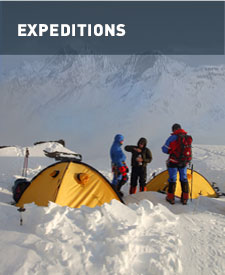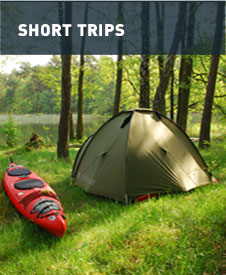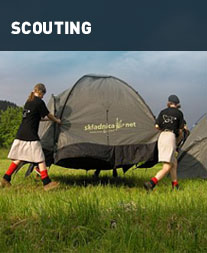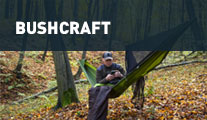Taking into account that camping in winter is an option chosen by experienced tent users, we decide to skip here the matter of appropriate clothes, equipment and psycho-physical preparations. The following comments relate only to using the tent.
For maximum insulation from the ground, we advise using thermal blankets. One blanket should be placed directly on the ground and the second inside the tent. For securing the tent to the ground, you can use an ice axe, telescoping or ski poles – cover the snow flaps with a thick layer of snow. When you decide to secure the tent with your skis – place them horizontally, otherwise strong winds may break them. Remember that snow is always different and use appropriate securing methods that take into account its consistency. If snow is soft , it will be necessary to compact it in the area assigned for the tent. When snow is hard – the process of putting the tent up will include the same procedures as when camping in summer. If possible situate your tent in a wind sheltered place.
Our expedition tents, have side vents, particularly useful when cooking inside the tent. Moreover, you don’t have to leave your tent to get snow for water (through a special flanged floor hatch, secured by a string).
When camping in snowy conditions, remember to leave the sliders of entrance zippers in their upper position. It will enable you to leave the tent covered by a thick layer of snow.
For such winter conditions choose a tent with yellow flysheet. This colour will help you (or others) to find the tent in really bad weather.
When choosing a tent for winter camping, remember that due to shorter day, low temperatures and weather conditions, you will spent much more time inside it than during a summer camping. Therefore, you should think about buying a more spacious tent with larger vestibule.












